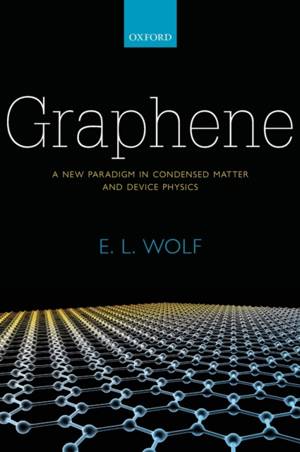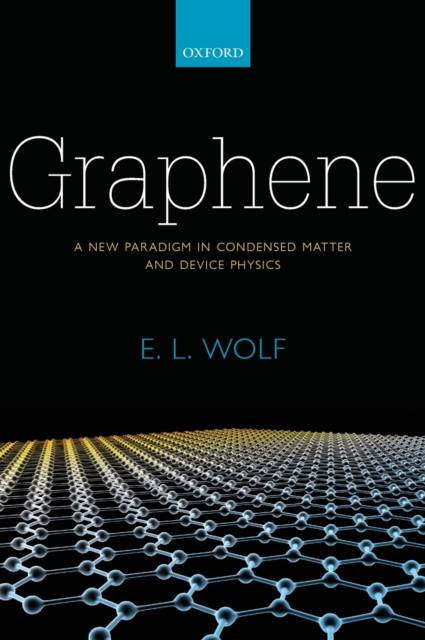
- Afhalen na 1 uur in een winkel met voorraad
- Gratis thuislevering in België vanaf € 30
- Ruim aanbod met 7 miljoen producten
- Afhalen na 1 uur in een winkel met voorraad
- Gratis thuislevering in België vanaf € 30
- Ruim aanbod met 7 miljoen producten
Zoeken
€ 249,95
+ 499 punten
Uitvoering
Omschrijving
The book is an introduction to the science and possible applications of Graphene, the first one-atom-thick crystalline form of matter. Discovered in 2004 by now Nobelists Geim and Novoselov, the single layer of graphite, a hexagonal network of carbon atoms, has astonishing electrical and mechanical properties. It supports the highest electrical current density of any material, far exceeding metals copper and silver. Its absolute minimum thickness, 0.34 nanometers, provides an inherent advantage in possible forms of digital electronics past the era of Moore's Law. The book describes the unusual physics of the material, that it offers linear rather than parabolic energy bands. The Dirac-like electron energy bands lead to high constant carrier speed, similar to light photons. The lattice symmetry further implies a two-component wave-function, which has a practical effect of cancelling direct backscattering of carriers. The resulting high carrier mobility allows observation of the Quantum Hall Effect at room temperature, unique to Graphene. The material is two-dimensional, but in sizes micrometers nearly to meters displays great tensile strength but vanishing resistance to bending. The book reviews theoretical predictions of excessive atomic vibrational motion, tied to the dimensionality. As explained, these predictions seem not of practical consequence, and such effects are unobservable in samples up to nearly one meter size. The disintegration temperature of this refractory material is estimated as 4900K, certainly higher than the measured sublimation temperature of graphite, 3900K. As explained, applications of Graphene come in classes that range from additives to composite materials to field effect transistor elements capable of extremely high frequency operation. The classes of applications correlate with differing methods of fabrication, from inexpensive chemical exfoliations of graphite, to chemical vapour deposition on catalytic substrates as Cu and Ni, at temperatures around 1300K. The book reviews potential applications within existing electronics, to include interconnect wires, flash-memory elements, and high frequency field effect transistors. The chance to supplant the dominant CMOS family of silicon logic devices is assessed.
Specificaties
Betrokkenen
- Auteur(s):
- Uitgeverij:
Inhoud
- Aantal bladzijden:
- 318
- Taal:
- Engels
Eigenschappen
- Productcode (EAN):
- 9780199645862
- Verschijningsdatum:
- 14/01/2014
- Uitvoering:
- Hardcover
- Formaat:
- Genaaid
- Afmetingen:
- 168 mm x 246 mm
- Gewicht:
- 771 g

Alleen bij Standaard Boekhandel
+ 499 punten op je klantenkaart van Standaard Boekhandel
Beoordelingen
We publiceren alleen reviews die voldoen aan de voorwaarden voor reviews. Bekijk onze voorwaarden voor reviews.











